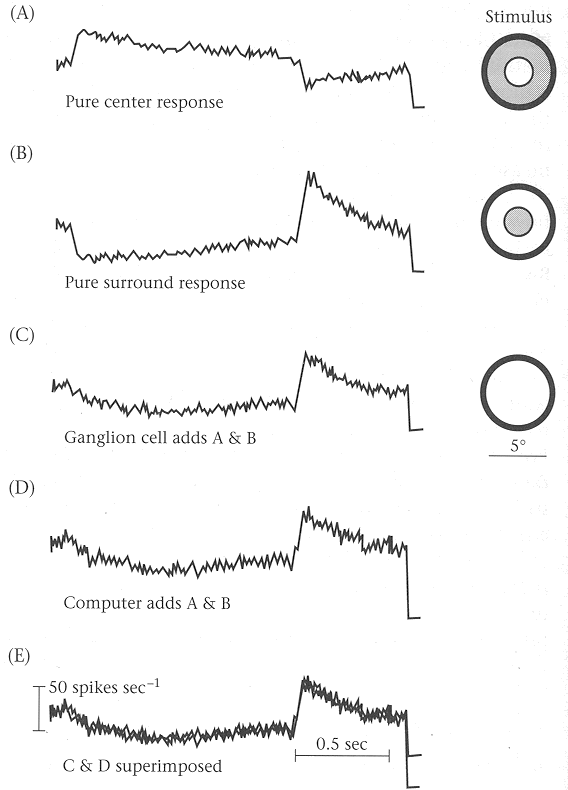
First we consider the superposition nature of the center and surround regions of the RF of a ganglion cell. It is shown by physiological studies that the linear sum of the response to a pure center stimulus and the response to a pure surround stimulus is a good prediction of the response to a stimulus covering both center and surround, such as the experiment by Enroth-Cugell and Pinto (1970) shown in this figure:

(A), (B) and (C) in the figure show, respectively, the average responses to a disk of light flashed in the RF center, an annulus flashed in the RF surround, and a disk of light covering the entire RF. (D) shows the superposition of (A) and (B), and (E) is a comparison of (C) and (D) which shows the superposition of responses in (A) and (B) is a good prediction of (C).
In fact, this supoerposition also holds in a more general sense than just for
the center and surround. Consider a stimulus in an arbitrary position x=u,
y=u inside the RF represented by
![]() ,
and the
corresponding response by h(t), the typical time response of, say, a midget
ganglion cell. Here h(t) has both transient and sustained parts is not
dependent on the spatial location
(xo, yo). Now this stimulus-response
relationship can be represented by
,
and the
corresponding response by h(t), the typical time response of, say, a midget
ganglion cell. Here h(t) has both transient and sustained parts is not
dependent on the spatial location
(xo, yo). Now this stimulus-response
relationship can be represented by
| r(t) | = | ![$\displaystyle T[ s(x,y,t)]=T[\int \int s(u,v,t) \delta(x-u, y-v, t) dx dy]$](img39.gif) |
|
| = | ![$\displaystyle \int \int s(u,v,t) T[\delta(x-u, y-v, t)] dx dy=\int \int s(u,v,t)
h(t) dx dy$](img40.gif) |